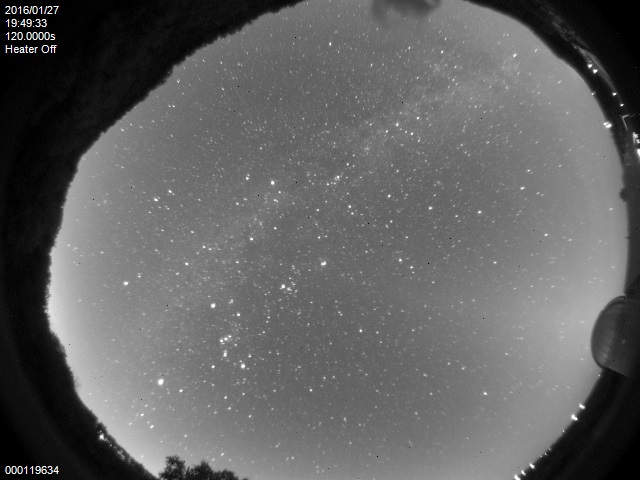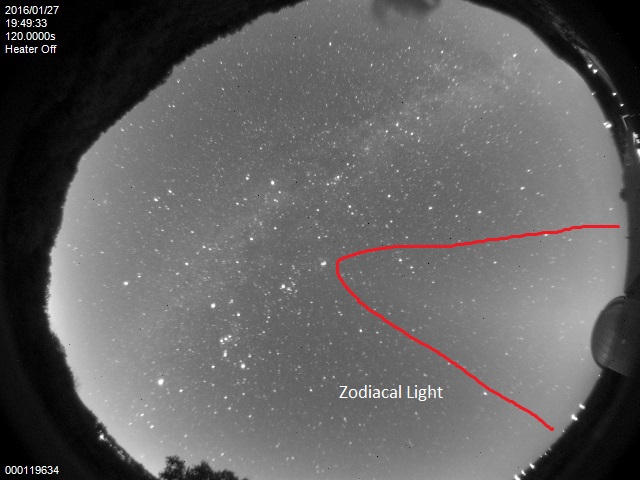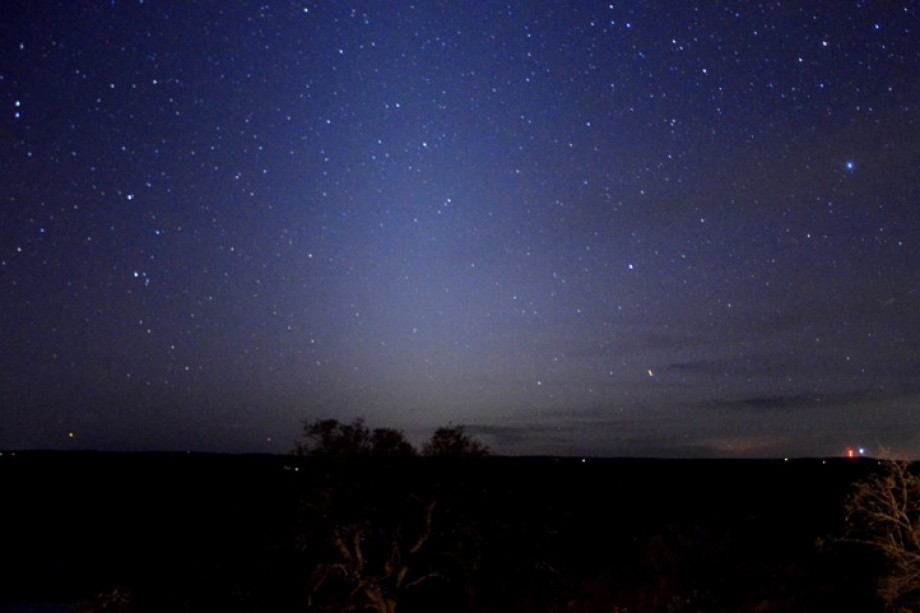Now is the time of year when the zodiacal light appears in the western sky shortly after twilight. The zodiacal light is a faint ethereal glow rising in the west in a pyramid shape pointing toward the zenith. The zodiacal light gets its name from the glow it makes along the line of the ecliptic in the sky. The ecliptic is the line that the sun, moon and planets follow across the sky. It is also along this line that the zodiac constellations reside, hence the name, zodiacal light.
Putman Mountain Observatory maintains an All Sky Camera that records video of the heavens every night. See the link: All Sky Camera. You can see the zodiacal light in the images the All Sky Camera takes each night after twilight in the late winter and spring. In the All Sky Camera image below, can you see the Milky Way? Can you see Orion? Can you see the zodiacal light rising over the dome of the observatory?
The source of the zodiacal light is interplanetary dust left over from the original nebula from which the solar system was formed. This interplanetary dust lies along the plane of the solar system which is the line of the ecliptic in the sky. The dust is more easily seen when the ecliptic is at a high angle in the sky so that it is illuminated by the sun but far enough outside the glare from the sun. In the diagram below, you can see the interplanetary dust lying along the plane of the solar system and why it is visible in the west during twilight.
The zodiacal light appears like a pyramid extending up from the horizon and leaning toward the line of the ecliptic since the interplanetary dust is in the same plane as the solar system. The zodiacal light is brightest near the sun but can never be seen because it’s lost in the glare from the sun. One of the best times to see the zodiacal light is shortly after twilight in the spring because the Earth blocks the glare from the sun. In the image below, the zodiacal light is outlined in red to show the location of it’s faint glow.
There are a number of requirements for seeing the zodiacal light. First you need an extremely dark sky. The glow from the zodiacal light is much fainter than the Milky Way. Second, there can be no moon present in the sky. The light from the moon will overwhelm the zodiacal light and even the Milky Way. Third, the ecliptic must be high in the sky to make the zodiacal light more visible. This occurs in the western sky after dusk during late winter and spring and in September and October in the eastern sky before dawn.
The image below shows the Zodiacal Light captured with a simple digital camera pointed toward the west from the observatory. Take some time after twilight during the spring and go find the zodiacal light. And remember, turn out the lights!




